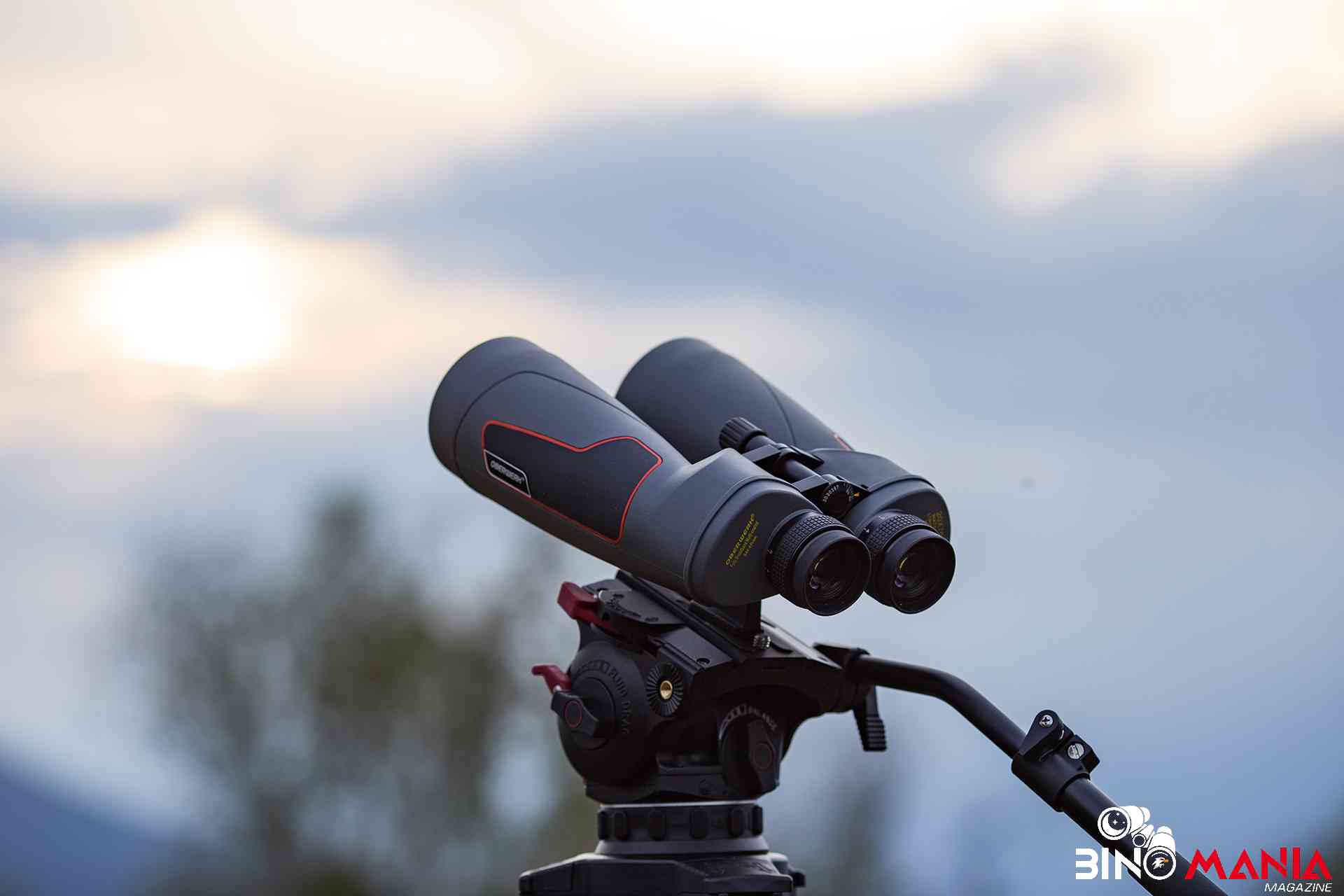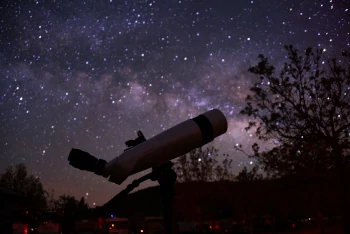
The new 20×70 ED Ultra is the finest mid-size binocular in our product line. The ED (Extra-low Dispersion) glass objectives greatly minimize chromatic aberration, delivering terrestrial and astronomical views free of false-color fringing. Field flatteners provide incredible sharpness across almost the the entire field. Very rugged yet relatively-lightweight magnesium-alloy construction, with precise individual focusers. This newest member of the Ultra family has an updated design, with gray rubber armor, with black and red highlights, and captive objective covers. Of course these are fully broadband multi-coated, waterproof, and nitrogen charged. Includes lightweight padded case, Oberwerk Heavy-Duty L Adapter and neck strap.
| FOV | 3.5° |
|---|---|
| Eye Relief | 12.0mm (usable) |
| Exit Pupil | 3.5mm |
| IPD Range | 57-75mm |
| Minimum Focus | 15m |
| Product Weight | 5.25 lbs. |
| Product Dimensions | L=11, W=8.5, H=4 in. |


Don't have an account? Click here to register.
Steve (verified owner) –
I’ve been very happy with the 20×70 ED Ultras for stargazing. I use them on a monopod with a 3/4″ section of galvanized steep pipe as a crossbar. Under dark skies (Bortle 2), I’ve seen all the Messier galaxies and more in the Virgo-Coma cluster, generally reaching magnitude 10. At home (Bortle 5), I can reach magnitude 9 galaxies.
Allan Byrne (verified owner) –
I have had these binocs for more than a year, but held off on a review because skies were really bad for much of the year. People use them with a monopod, but I was not able to get perfect focus that way. That was a good excuse to buy an Oberwerk 4000 tripod/head. The words “buttery smooth” are not an exaggeration. If you get it, take time to learn what all the knobs do. I had it for a while before I found out the big buttons on the legs allow me to open the legs wide enough to sit “under” the tripod which makes it easier to look at high objects. This binocs review will be based on using this tripod.
I was a little afraid of the individual focus knobs, but with the really good front lens caps that go on easy and stay on, and a tripod, it was very easy to get things super sharp. I now think I prefer it to center focus, unless your passing back and forth with friends.
The feel of the binocs is very solid and rugged. They are also very nice to look at with the blue/grey color and the red and black trim. I keep them set up in the living room ready to go. They are heavy, but even on the tripod they are easy to carry down some stairs, and easy to move around the backyard to avoid trees and houses.
There is very little false color – certainly not on stars. I see some on the moon, but because I see some false color with my naked contact lensed eyes, I am not the best judge of that. There is a drop in sharpness as you get to the field edge, but that is not an issue for me because what is in sharp focus is real great. Kevin, who is always so helpful, said if I wanted sharper edges to go with the 20×65, but for crisp detail, colors, and brightness go with the 20/70ED. He was right.
The moon views are absolutely amazing – best low power views I have seen. No need to bring out the refractor for low power views. Awesome sharpness and 3-D details. A crescent moon with earth shine is an inspiring sight with the bright side gradually receding to a very thin line. One night I saw a velvet black crater with a tiny white dot in the center. At first I thought it was dirt on the lens, but it turned out to be the very tip of a mountain. Even the full moon is a wonderful sight. 20xs is a nice jump from 15xs. Two eyes can be better than one.
I was able to get Mars and full Venus into tight orbs with no flaring.
At a dark PA sight with less than perfect skies, I could see all the M objects in great detail from Aquila to Srorpius. The field of view is big enough to get almost everything in the sharp center field. The Pleiades just fits in. Same for the Orion Nebula.
I could just see the Ring Nebula in suburban skies – couldn’t find it in 15x70s. One of the best sights, again from urban skies, was the Double Cluster – there was very nice sharp detail and color right to the centers of the clusters. Again 20xs makes a big difference. Speaking of color, I never realized how much was up there. These binocs are great for chancing upon colorful double stars.
Really nice binocs and great staff support.